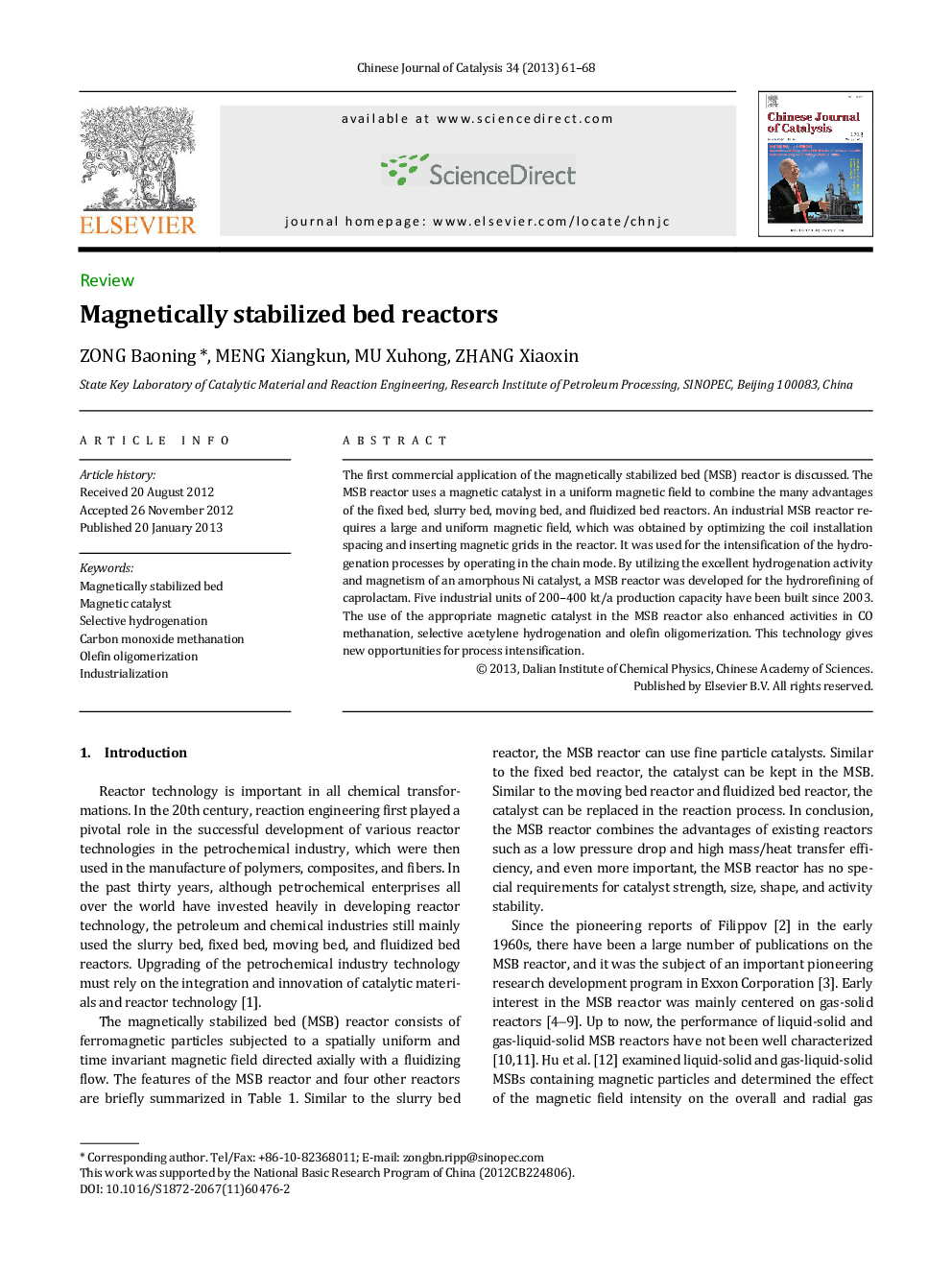| Article ID | Journal | Published Year | Pages | File Type |
|---|---|---|---|---|
| 60135 | Chinese Journal of Catalysis | 2013 | 8 Pages |
The first commercial application of the magnetically stabilized bed (MSB) reactor is discussed. The MSB reactor uses a magnetic catalyst in a uniform magnetic field to combine the many advantages of the fixed bed, slurry bed, moving bed, and fluidized bed reactors. An industrial MSB reactor requires a large and uniform magnetic field, which was obtained by optimizing the coil installation spacing and inserting magnetic grids in the reactor. It was used for the intensification of the hydrogenation processes by operating in the chain mode. By utilizing the excellent hydrogenation activity and magnetism of an amorphous Ni catalyst, a MSB reactor was developed for the hydrorefining of caprolactam. Five industrial units of 200–400 kt/a production capacity have been built since 2003. The use of the appropriate magnetic catalyst in the MSB reactor also enhanced activities in CO methanation, selective acetylene hydrogenation and olefin oligomerization. This technology gives new opportunities for process intensification.
摘要介绍了磁稳定床反应器在国际上的首次工业应用, 它集成了浆态床、固定床、移动床和流化床等反应器的优点. 通过调整线圈间距、在反应器内设置磁隔栅构件, 实现了均匀磁场的放大; 绘制出磁稳定床反应器链式操作相图. 将非晶态 Ni 优异的加氢性能和磁性与磁稳定床反应器反应过程强化性能相结合, 实现了在己内酰胺加氢精制过程的工业应用, 并建成 5 套 20∼$40 万吨/年工业装置. 磁性催化剂与磁稳定床反应器相结合, 强化了甲烷化、乙炔选择性加氢和烯烃叠合等反应过程, 形成了新技术生长点.
Graphical abstractThe magnetically stabilized bed reactor combines the advantages of the fixed bed, moving bed and fluidized bed reactors to intensify the hydrogenation process.Figure optionsDownload full-size imageDownload as PowerPoint slide
